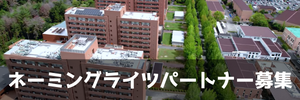(English announcement can be found in the latter half of this notice.)
広島大学バイオマスプロジェクト研究センターと中国地域バイオマス利用研究会の共催で広島大学バイオマスイブニングセミナーを開催しています。バイオマスに関する基本的な考え方から最先端の情報までをカバーして、この地域におけるバイオマスの活動に資することを目的とするものです。第43回を以下の日程で開催しますので、ご参集下さい。
日時 2016年6月2日(木)16:20~17:50
会場 広島大学東広島キャンパス工学部110講義室
http://hiroshima-u.jp/eng/access/lectureroom
http://hiroshima-u.jp/eng/access/building
プログラム
解説 広島大学大学院工学研究院 教授 松村幸彦
講演 広島大学大学院工学研究科 M2 Warat KOSACARN
「水熱条件下のセルロース溶解に対するセロビオース添加影響」
本研究では水熱前処理の様々な条件下においてセルロース溶解に対するセロビオース添加影響を確認することを目的にしました。連続流反応器を用い、圧力を15MPaに設定の上、温度を260,290 and 320˚Cに変化させ、実験を行いました。セルロース供給は0.5 gであり、セロビオース供給は 0.3 g です(溶媒は1Lの水)。分析方法は粒子径分析機と全有機体炭素分析機を使いました。粒子径変化が発見されました。また、セロビオースはセルロース溶解に邪魔するのではないかという結果が得られました。
講演 広島大学大学院工学研究院 特任助教 Obie Farobie
「バイオディーゼル超臨界メタノールの生産とエタノールのためのスパイラル炉の応用:プロセス評価」
この研究では、超臨界メタノールおよびエタノールを用いて螺旋反応器におけるバイオディーゼル生産のプロセス評価を行いました。この研究の目的は、超臨界メタノールおよびエタノールを用いてバイオディーゼルを製造するための正味のエネルギー比(NER)およびエネルギー効率を比較するために、熱回収効率の観点から螺旋反応器の有効性を確認するためです。分析結果は、0.94と0.93のNERは、それぞれ、超臨界メタノールおよびエタノール中でバイオディーゼルの生産のために得られたことを明らかにしました。一方、両方の超臨界メタノールおよびエタノールのエネルギー効率は、両方のプロセスのための螺旋状反応器におけるバイオディーゼルの生産はエネルギー効率の良い方法であることを示す、すなわち、0.98に等しかったです。
講演 広島大学大学院工学研究科 D2 Nattacha PAKSUNG
「トマトの残渣の超臨界水ガス化」
本研究は条件不利地域の北広島町で得たトマト残渣の超臨界水ガス化に注目しました。連続式反応器を用い、プロセスのデザインを行いました。熱力学的解析及び熱交換デザインによりプロセス効率の計算を行い、トマト残渣を原料とし、エネルギーと環境面からガス化の可能性を評価しました。
司会 広島大学特別研究員 Thachanan SAMANMULYA
なお、18:00より意見交換会(参加費 800円)を開催します。ご都合の付く方はこちらにもご参加下さい。
The 43rd Hiroshima University Biomass Evening Seminar
Biomass Project Research Center, Hiroshima University, and HOSTY Association are co-organizing the Hiroshima University Biomass Evening Seminar. This seminar covers topics from the fundamentals of biomass to the latest information so that it can contribute the activities on biomass in this district. The 43rd seminar will be held as follows. Please join.
Date & Time: Thu.2 Jun, 2016 16:20-17:50
Place: Engineering 110 Lecture Room, Higashi-Hiroshima Campus, Hiroshima University
http://hiroshima-u.jp/eng/access/lectureroom
http://hiroshima-u.jp/eng/access/building
<Program>
Commentary: Yukihiko MATSUMURA
Professor, Institute of Engineering, Hiroshima University
Lecture: Warat KOSACARN
M2 Student, Graduate School of Engineering, Hiroshima University
“Effect of Cellobiose on Dissolution of Cellulose into Water under Hydrothermal Conditions ”
In this particular study, an objective is to continue investigating the effect of cellobiose on the dissolution of cellulose. Dissolution is to be carried out inside a continuous flow reactor under the following condition: Temperature of 260,290 and 320˚C while keeping pressure at 15MPa and flow rate at 20 mL/min. Cellulose powder with the weight of 0.5 g was loaded with cellobiose powder with the weight of 0.3 g in 1 L of water. The analyzer used are LD-particle size analyzer and total organic carbon analyzer to analyze the change in particle size of cellulose powder after hydrothermal pretreatment and to analyze the amount of carbon dissolved in liquid phase, respectively. The change in particle size of cellulose is detected. An increase in amount of cellubiose into the suspension could result in the hindered formation of oligomers which leads to the lower dissolution of cellulose.
Lecture: Obie Farobie
Specially Appointed Assistant Professor, Institute of Engineering, Hiroshima University
“Application of Spiral Reactor for Biodiesel Production in Supercritical Methanol and Ethanol: Process Evaluation”
In this study, process evaluation of biodiesel production in a spiral reactor using supercritical methanol and ethanol was conducted. The aims of this study are to compare the net energy ratio (NER) and energy efficiency for the production of biodiesel using supercritical methanol and ethanol, and to verify the effectiveness of the spiral reactor in terms of heat recovery efficiency. The analysis results revealed that the NER of 0.94 and 0.93 were obtained for production of biodiesel in supercritical methanol and ethanol, respectively. Meanwhile, the energy efficiency for both supercritical methanol and ethanol was equal, i.e., 0.98, indicating that the production of biodiesel in a spiral reactor for both process is an energy-efficient process.
Lecture: Nattacha PAKSUNG
D2 Student, Graduate School of Engineering, Hiroshima University
“Supercritical Water Gasification of Tomato Residue”
In this study, we target on tomato residue produced in rural area of Kita-Hiroshima town, Hiroshima, as a feedstock for gas production via supercritical water gasification. The reactor type employed in this study is continuous reactor. The process efficiency was calculated based on thermodynamics and heat exchanger design. The tomato residue potential for the gas production was evaluated in terms of energy and environmental aspect..
Chair: Thachanan SAMANMULYA
Special Postdoctral Researcher, Hiroshima University
We will hold the discussion meeting from 18:00 (800 JPY needed). Join this meeting, too if you are available.


 Home
Home









